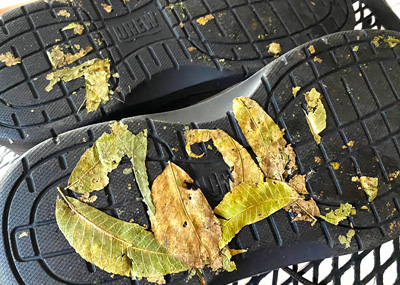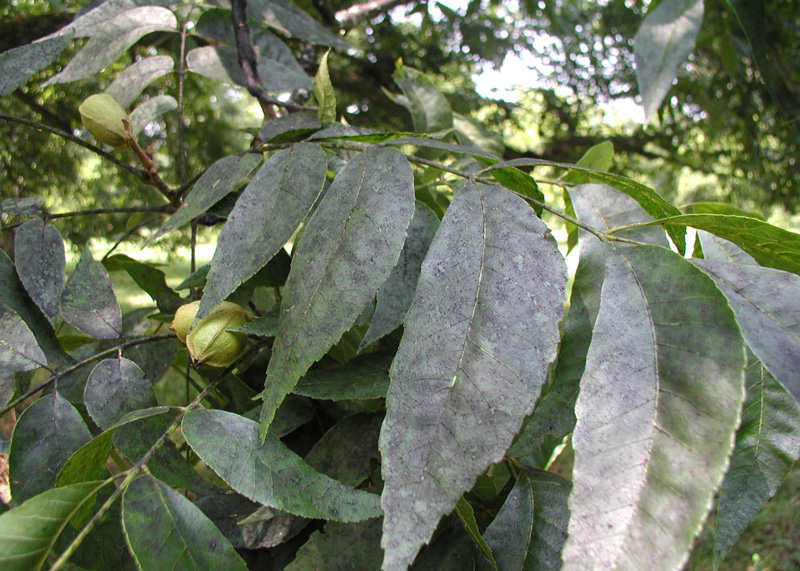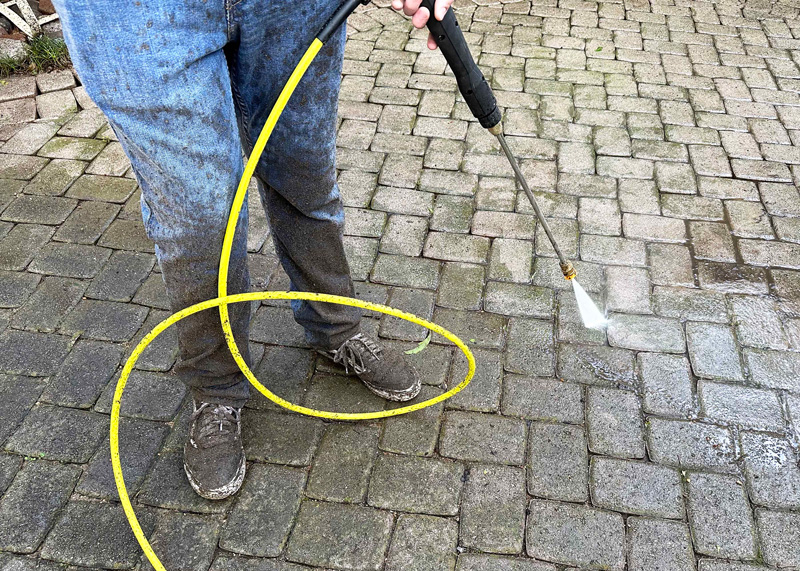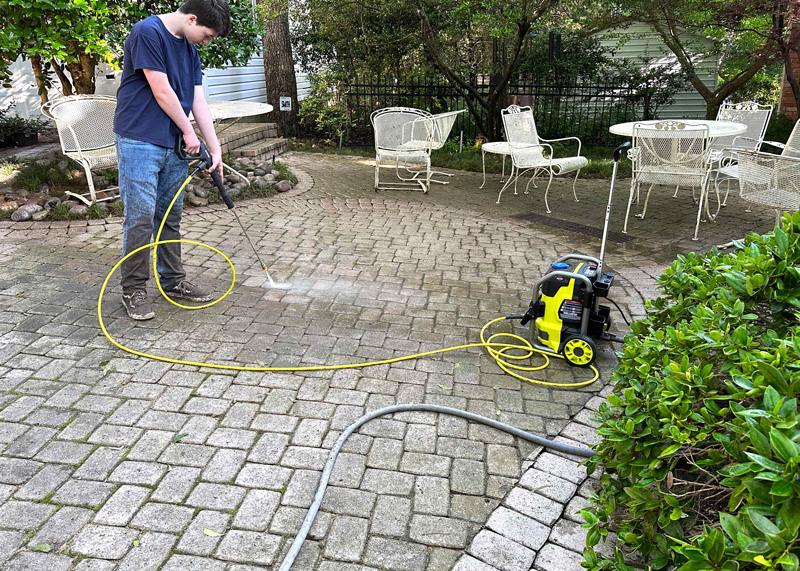Honeydew sticks to everything
Insects with piercing-sucking mouthparts feed off the sap of their host plants’ stems and leaves. They pass the fluids through their bodies and excrete a residue we call “honeydew.”
Our first signs of their presence are small drips of honeydew falling like mist. We see them against the sunlight. Then they begin to accumulate on leaf and stem surfaces where they resemble splatters of varnish that never really dry.

It’s in that sticky substrate that a fungus known as sooty mold starts to grow. It’s not existing off the host plant in any way. It’s living in the honeydew.

That explains why sooty mold can get started in a porous Pavestone driveway. Honeydew collects there and sooty mold grows there. Rainfall and normal washing won’t get rid of it. It requires high pressure, and that’s what our grandson Joseph is doing this week.

Joseph is using a power washer (no soap – just plain water) at 2000 PSI to rinse off the honeydew, black sooty mold and all. It puts up little resistance. Moss left over from the winter gets lifted loose at the same time.

Joseph will be going into the 8th grade this fall. That’s an age when it’s difficult for a young man to find paying work in the outside world. But knowing Joseph as we do, we’re glad to hire him.

Joseph is Alex’s younger brother. You may recall that Alex did a similar power wash of our drive 3 years ago (reported here). Alex will soon become a senior in construction science at TAMU. Joseph was in his wedding two weeks ago tonight.
I’m not going to have the completed “After” photo of Joseph’s work on our driveway by e-gardens’ press time this Thursday. That will have to follow in a couple of weeks. But I wanted to offer encouragement in the hopes that you might be able to match up a youngster with a much-needed cleaning task for summer employment. Everyone comes out a winner!
